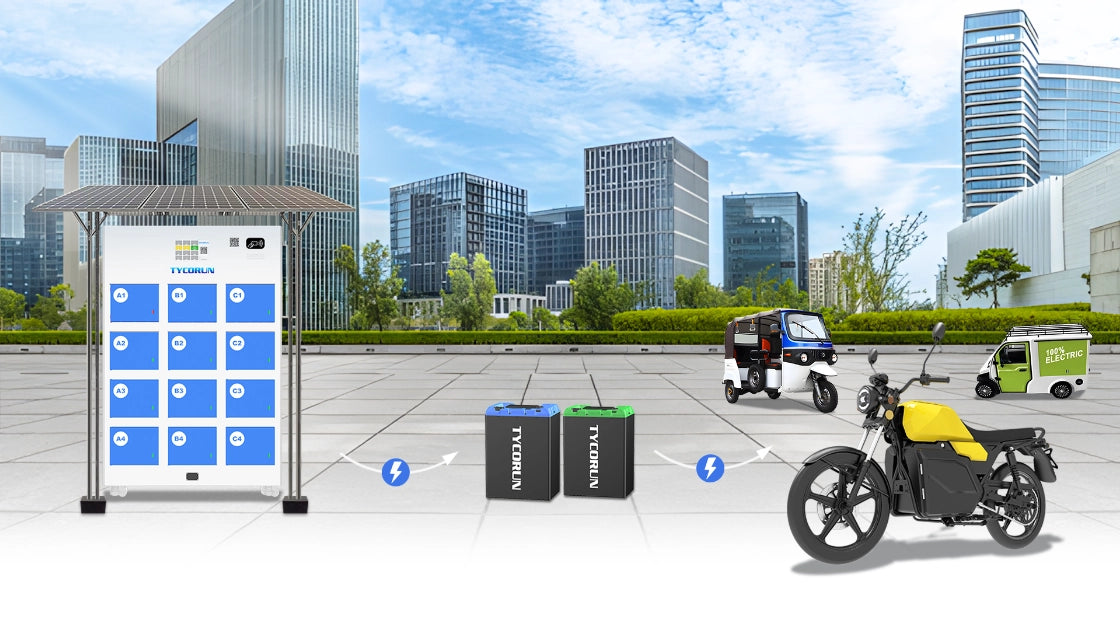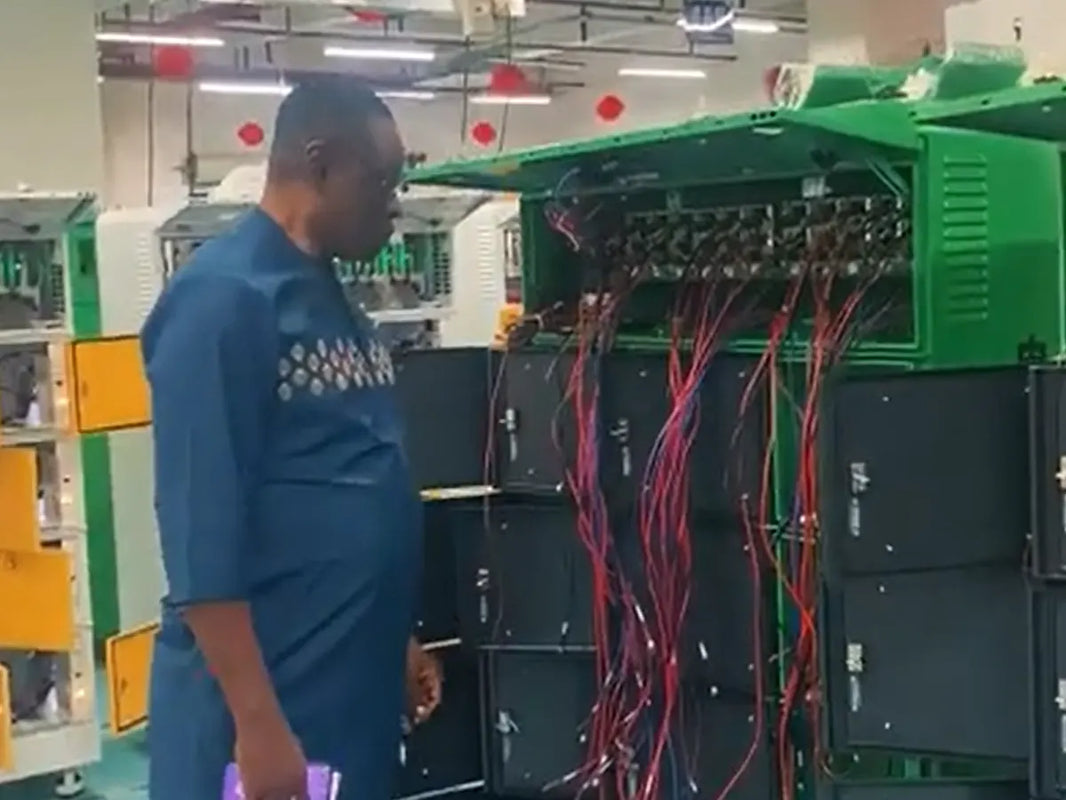Have you ever wondered what people mean when they say the end of a battery? Many think it simply means when the battery stops working, but there’s more to it. The phrase end of a battery actually has two meanings — one is about its physical parts (the battery’s ends or terminals), and the other is about the time when the battery can no longer hold enough power to be useful.
This guide will explain both meanings in easy language so beginners can clearly understand what happens at the end of a battery and how to take care of it to make it last longer.

Main content:
- What Does “End of a Battery” Mean?
- The Physical End of a Battery: The Terminals
- The Functional End of a Battery: When It Loses Power
- How the End of a Battery Affects Performance
- How to Delay the End of a Battery
- Why the End of a Battery Matters
- Recycling and Reusing After the End of a Battery
- The Science Behind the End of a Battery
- Conclusion
What Does “End of a Battery” Mean?
The end of a battery can mean two things:

- Physical end: the positive and negative terminals where power flows in and out.
- Functional end: when the battery’s performance has dropped so much that it’s no longer efficient or reliable.
Understanding both sides helps you know how a battery works, when it’s getting old, and how to use it safely.
The Physical End of a Battery: The Terminals
Every battery has two ends called terminals. These are the connection points that send power from the battery to the device it powers. One is marked with a plus sign (+) for the positive end, and the other with a minus sign (–) for the negative end.
When the device is turned on, electricity moves from the positive terminal through the device and returns to the negative terminal, completing a circuit. Without both ends working properly, the battery can’t deliver energy correctly. So, taking care of the physical end of a battery is important for safety and performance.

1. Types of Battery Terminals
Different batteries have different terminal styles depending on their use. Here are the most common types you may find:
- Bolt-on terminals: These are strong and used in heavy-duty machines, cars, and electric vehicles.
- Stud terminals: Designed for high current flow, often used in industrial applications.
- Quick-disconnect terminals: Found in smaller electronics like cameras and tools, easy to plug and remove.
- Ring terminals: Common in robotics and medical equipment for stable, corrosion-resistant connections.
Choosing the right terminal type ensures a good connection and prevents overheating, which helps delay the end of a battery.
2. How to Check and Maintain Terminals
Checking the ends of your battery regularly is one of the easiest ways to prevent problems. Here’s how you can do it:
- Look closely: See if there’s any rust, white powder, or dirt around the terminals.
- Check tightness: Make sure the connections are secure. Loose connections can cause heat and power loss.
- Use a tester: If you have a multimeter, you can measure the voltage to ensure the battery is still healthy.
- Clean carefully: Use a small brush and a mixture of baking soda and water to clean corrosion.
Doing these small checks every few months helps keep the terminals clean and delays the end of a battery by keeping it in good working condition.
Read: How to clean battery corrosion
3. Common Terminal Problems
If not maintained, the physical end of a battery can face several issues:
- Corrosion: Caused by moisture or acid leaks, it blocks the flow of electricity.
- Loose ends: Unstable terminals can lead to flickering power or device shutdowns.
- Heat buildup: Poor connections cause resistance and make the terminals hot.
- Cracks or damage: Broken terminals may stop current flow completely.
Fixing these early by cleaning, tightening, or replacing damaged parts can make your battery last longer and prevent unexpected failures.
The Functional End of a Battery: When It Loses Power
The second meaning of end of a battery is its functional end, which means when the battery can no longer perform like it used to. Even if it looks fine from the outside, a battery slowly loses its ability to store and deliver energy over time.
For most rechargeable batteries, this happens when their state of health (SOH) drops below 80% of their original capacity. The battery might still work, but not well enough to power your device for long periods. At that stage, it has reached the end of a battery’s useful life.

1. What Causes the Functional End?
Several things influence when the functional end of a battery happens:
Charging habits: Overcharging or letting the battery fully drain too often shortens its lifespan.
- Temperature: Batteries dislike extreme heat or cold. High heat speeds up aging, while low temperatures reduce performance.
- Usage cycles: Every time you charge and discharge a battery, it goes through one cycle. Over many cycles, capacity slowly fades.
- Depth of discharge: Using the battery until it’s completely empty frequently wears it out faster.
- Storage conditions: Storing a battery at full charge or in humid areas can reduce its health.
Understanding these factors helps you control how quickly the end of a battery approaches.
2. Signs That Your Battery Is Near Its End
How do you know your battery is close to the end? Here are some clear signs:
- Shorter runtime: Devices that used to last all day might now die after a few hours.
- Slower charging: Batteries near their end take longer to charge or never reach 100%.
- Excess heat: If your battery becomes hot easily, it’s struggling to handle energy flow.
- Swelling or leaking: This is a physical warning that the end of a battery has arrived and it’s unsafe to use.
- Drop in performance: The power output becomes weaker or unstable.
Once you notice these symptoms, it’s best to plan for a replacement before it stops completely.
How the End of a Battery Affects Performance
The end of a battery is the point where energy leaves the cell and powers your device. This area, called the battery terminal, is crucial for how well the battery performs. When the terminals are dirty, loose, or damaged, the flow of power can be disrupted and cause several problems. Here’s how the end of a battery impacts its performance:
1. Power Flow Resistance:
When dust, rust, or buildup appears on the terminals, it increases resistance. This makes it harder for electricity to move through, which lowers efficiency and causes the battery to drain more quickly.
2. Energy Transfer:
The positive and negative ends of a battery work together to send current in a closed loop. If the ends are not connected properly, the device may stop working, flicker, or fail to turn on.
3. Safety Concerns:
If the terminals at the end of a battery are cracked, loose, or corroded, it can cause heat buildup or even leaking. In extreme cases, especially in powerful batteries, this can lead to dangerous conditions like swelling or fire.
4. Battery Durability:
Keeping the end of a battery clean and secure helps it perform well for a longer time. Simple maintenance—like checking connections and removing corrosion—can prevent early wear and extend the battery’s overall lifespan.
How to Delay the End of a Battery
While all batteries eventually wear out, you can take several steps to slow down the process. Good habits help extend both the physical and functional life of your battery.
1. Charge and Discharge the Right Way
Keeping the charge between 20% and 80% is one of the best ways to prevent early aging. Avoid charging too fast or using very high current chargers unless your battery is designed for it.
Here are a few practical tips:
- Don’t leave your device plugged in all night.
- Avoid fully draining the battery often.
- Use the charger recommended by the manufacturer.
- Let the battery rest after heavy use before charging again.
Following these practices can significantly delay the end of a battery.
2. Keep It Clean and Cool
Heat is one of the biggest enemies of batteries. To protect your battery:
- Keep it away from direct sunlight or hot car interiors.
- Store it in a cool, dry place when not in use.
- Make sure the vents around the battery area aren’t blocked.
- Clean terminals gently to ensure good current flow.
By keeping the physical ends clean and preventing overheating, you reduce the stress that speeds up the end of a battery.
3. Store Batteries Properly
When you’re not using a battery for a long time, store it properly to avoid damage. Here’s how:
- Keep it at around 50% charge — not full and not empty.
- Store it at moderate room temperature (about 20–25°C).
- Avoid damp or dusty environments.
- Check it every few months to make sure it hasn’t drained completely.
Proper storage is one of the easiest ways to prevent early end of a battery, especially for lithium-based types.
Why the End of a Battery Matters
Knowing when and how the end of a battery happens is not only useful for everyday gadgets but also critical for larger systems like electric vehicles, solar power systems, and industrial machines.
If a company continues using batteries past their functional end, it can lead to power failures, lower efficiency, or even safety risks like overheating or fire. By monitoring the health of each battery, businesses can plan timely replacements and reduce downtime.
For regular users, understanding the end of a battery helps prevent frustration and saves money in the long run. You’ll know when to maintain, replace, or recycle a battery responsibly.
Recycling and Reusing After the End of a Battery
Once a battery reaches its end, it doesn’t mean it has no value left. Many materials inside — such as lithium, nickel, and cobalt — can be reused to make new batteries. Recycling helps the environment and reduces the need for new raw materials.

Here’s how to handle old batteries safely:
- Do not throw them in household trash.
- Bring them to a recycling center or an electronics store that accepts used batteries.
- If it’s swollen or leaking, place it in a non-metal container and take it to professionals.
- Check local rules about proper disposal.
By recycling at the end of a battery’s life, you help protect the planet and support a cleaner energy future.
The Science Behind the End of a Battery
Every time you use a rechargeable battery, tiny chemical reactions take place inside it. Over many cycles, these reactions slowly change the internal materials. As a result, the battery can’t store as much energy or release it efficiently anymore.
When the battery’s internal resistance increases and capacity falls below 80% of its original level, scientists and engineers say it has reached the end of a battery’s life. Even though it might still work a little, it no longer performs well enough for demanding use.
Understanding this helps manufacturers design better batteries that last longer, and helps users take steps to slow down the natural process.
Cklick: Rechargeable batteries vs alkaline
Conclusion
The ends of a battery, known as its terminals, do much more than simply connect it to a device. They play an essential role in how effectively the battery delivers and receives energy. These connection points manage the flow of electricity, helping your equipment run smoothly and reliably.
Knowing how to identify the positive and negative ends, along with learning how to care for them, can make a big difference in how long your battery lasts and how well it performs.
Keeping the end of a battery clean, tight, and free from rust helps maintain stable power transfer and reduces safety risks. So, whenever you use a battery, remember that the end of a battery is not just a connector—it’s the point where all the power exchange takes place.
FAQs
What are the signs that a battery is nearing the end of its life?
Some warning signs are lower capacity, higher internal resistance, and unstable performance. These show that the battery’s health has declined and is no longer within its normal working range.
How can you extend the lifespan of a lithium battery pack?
You can make the battery last longer by following proper charging habits, keeping it away from very hot or cold conditions, and checking the terminals often for rust or damage.
How long do batteries usually last?
Generally, a new battery after three to four years.
Who We Are
At TYCORUN, we specialize in lithium battery manufacturing and offer one-stop battery solutions. Since 2007, we’ve been committed to R&D, production, and sales of lithium battery packs, battery cells, and battery management systems (BMS). Our products cover a wide range of applications such as electric motorcycles, energy storage, and custom solutions. With over 15 years of experience and a strong global network, TYCORUN supports OEM/ODM services, provides technical support, and ensures quality with multiple certifications, including UN38.3, MSDS, CE, and UL. Contact Us to find your battery need.
















